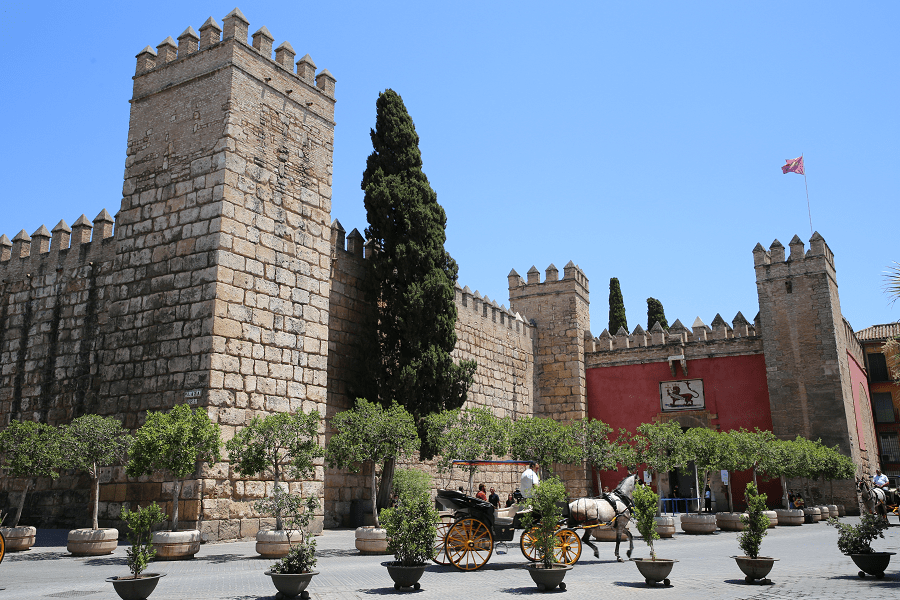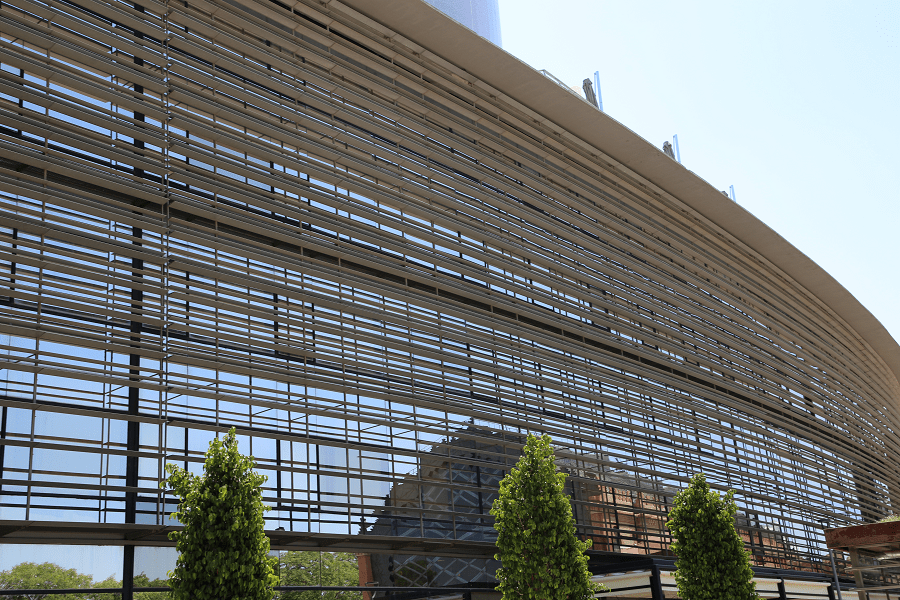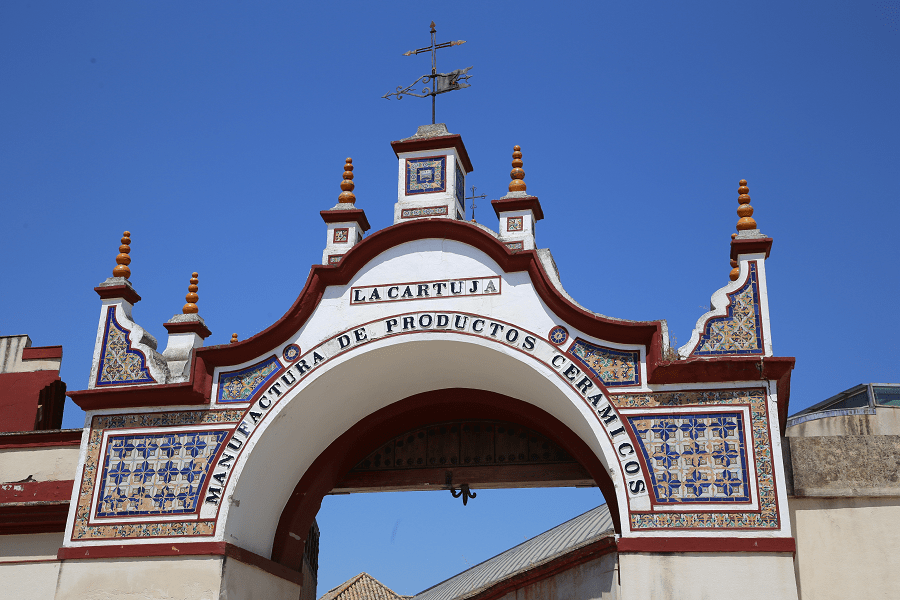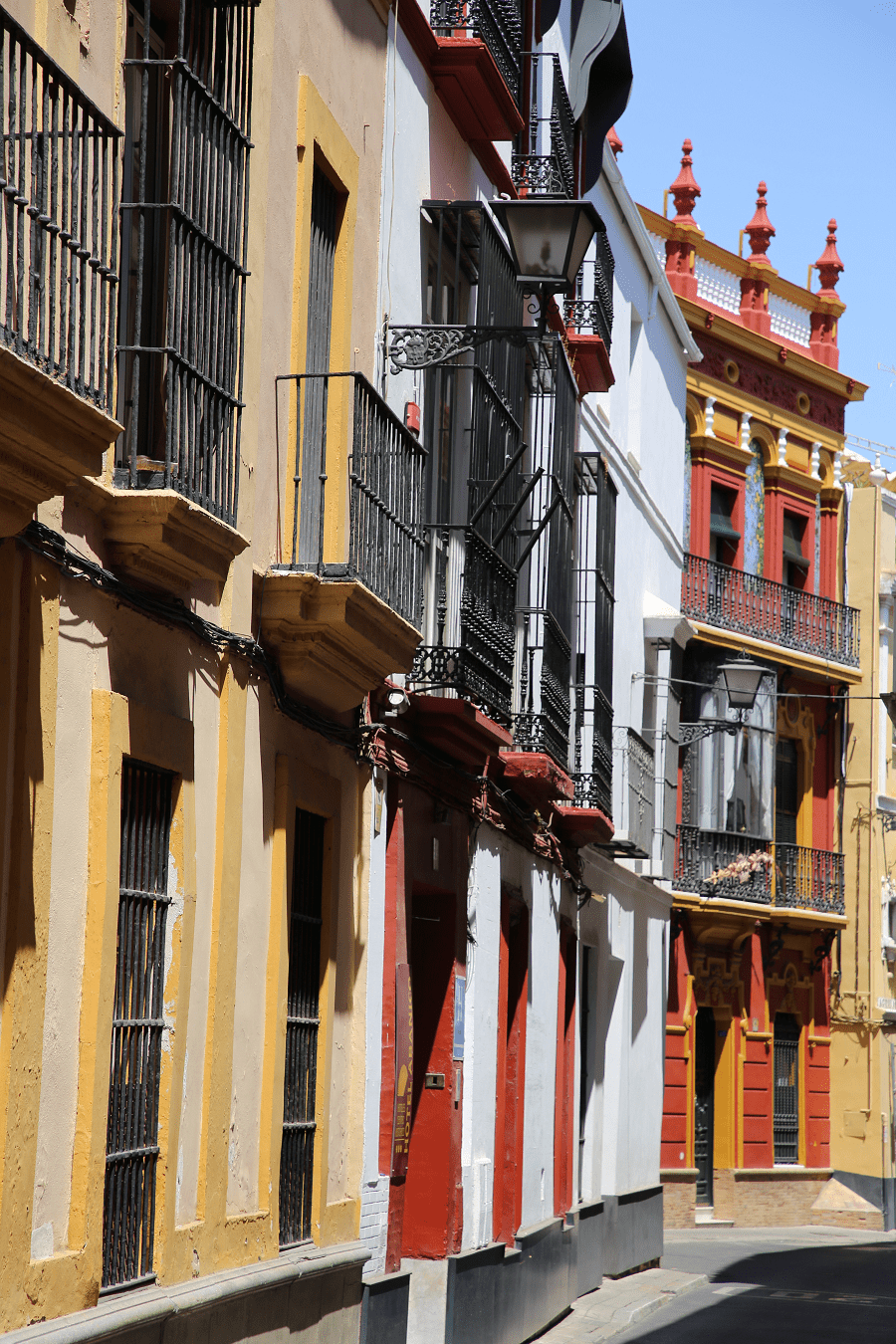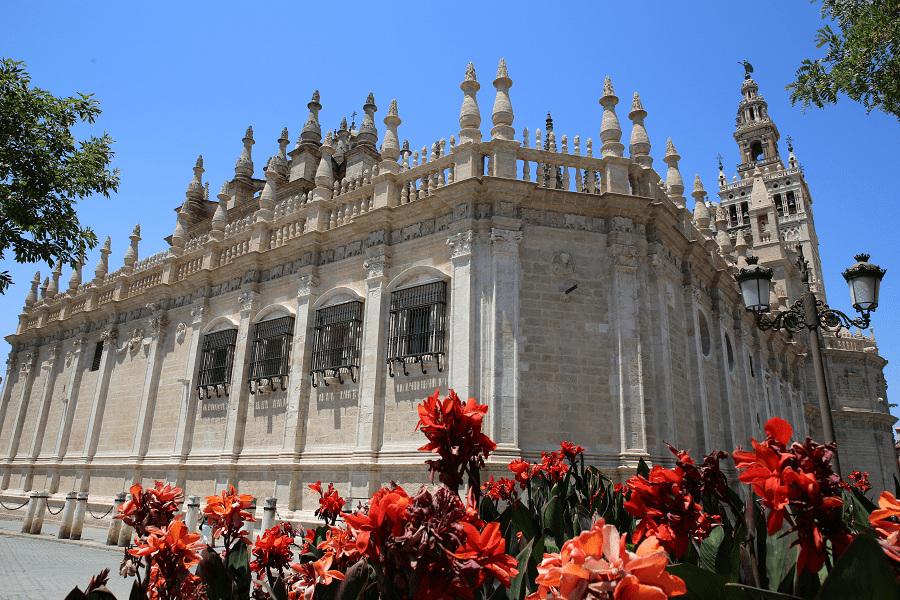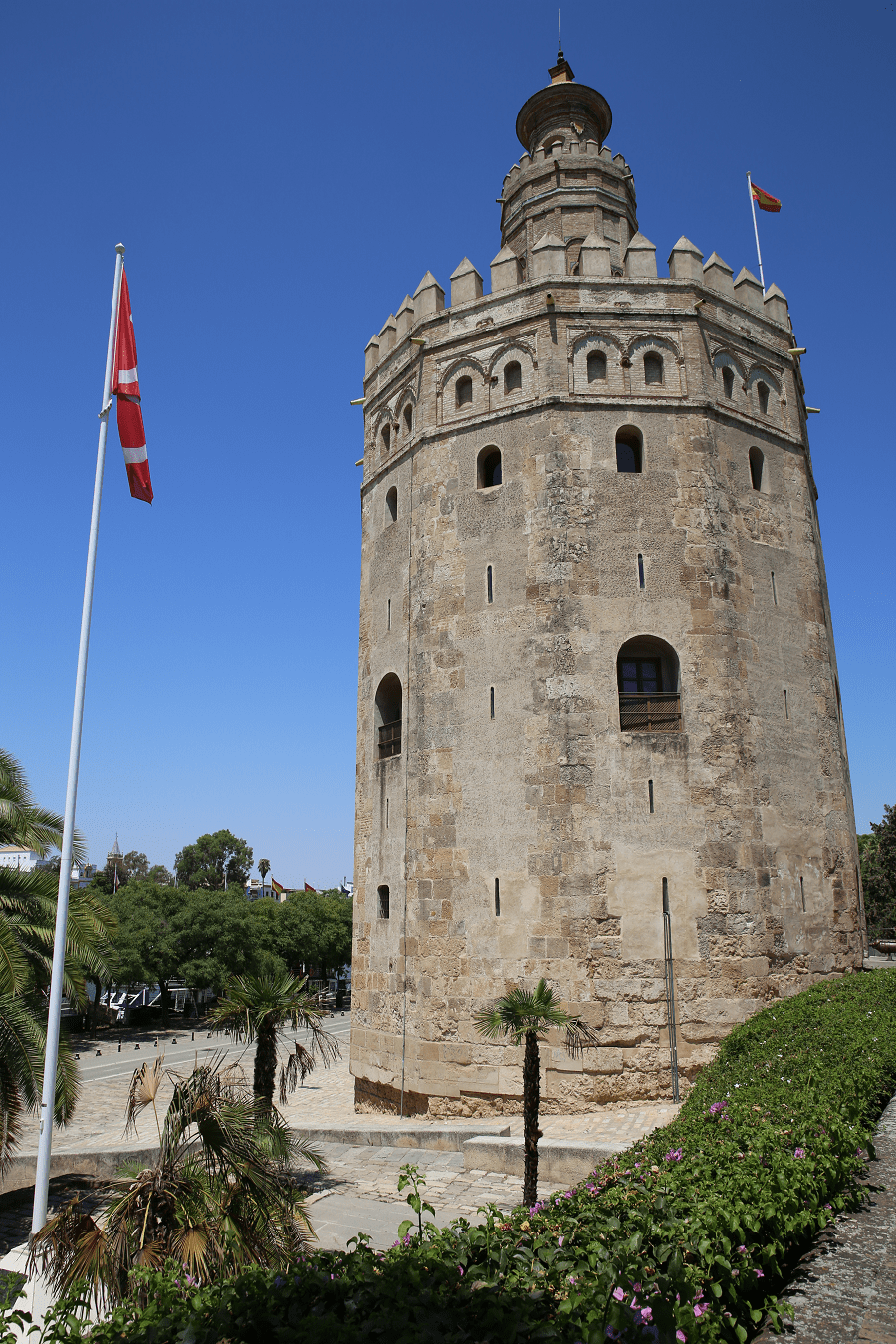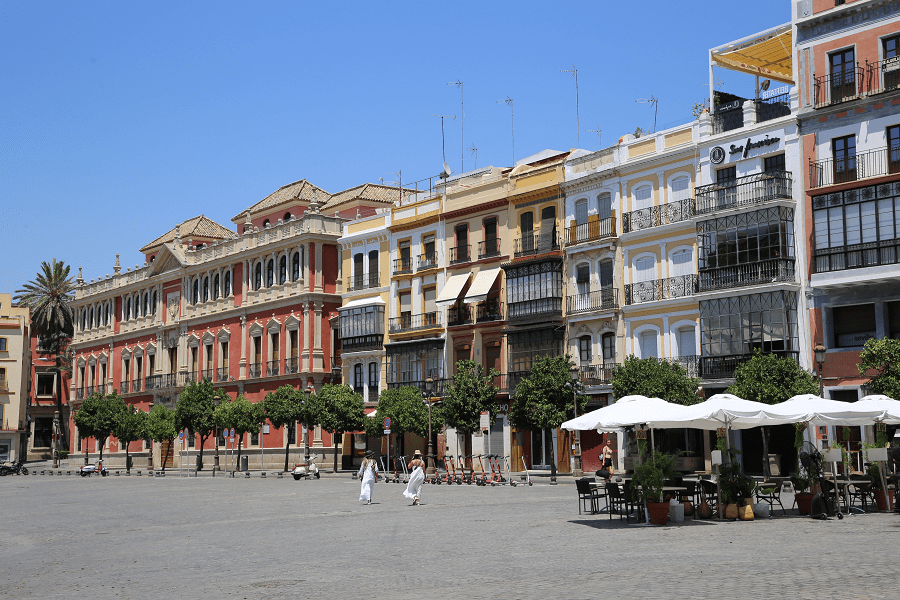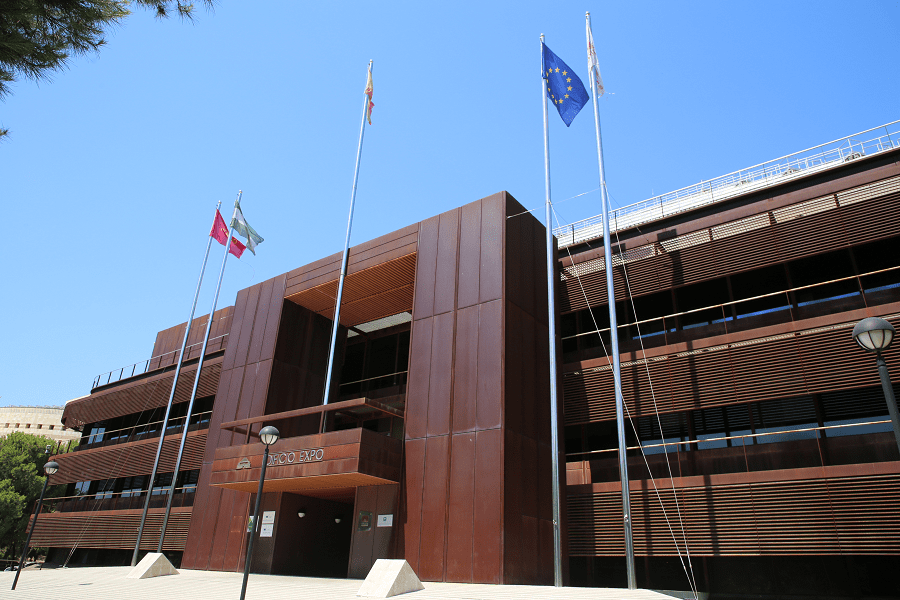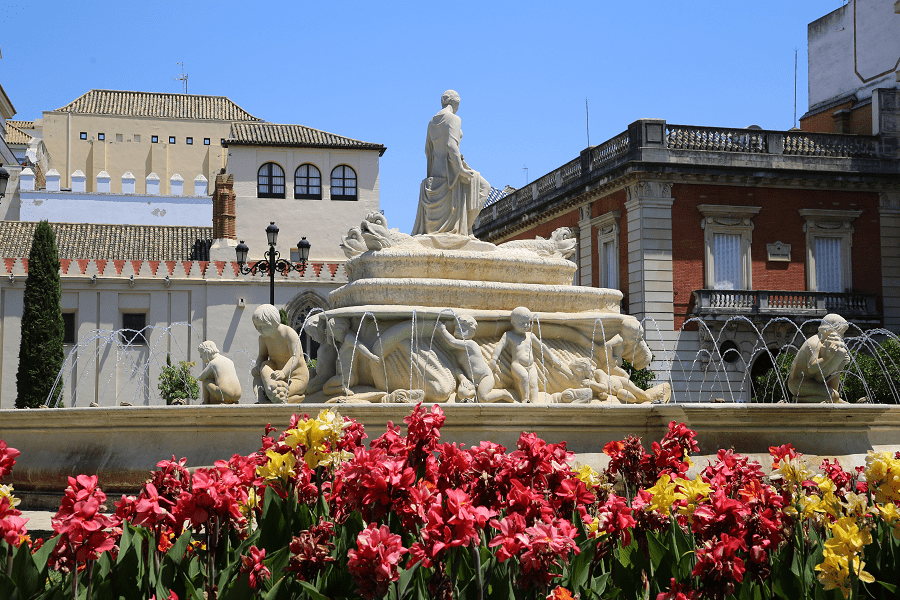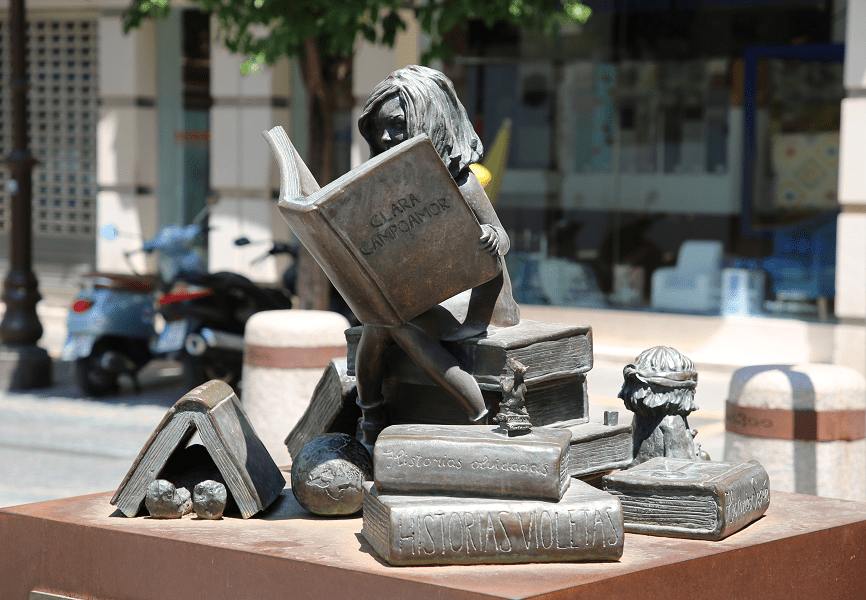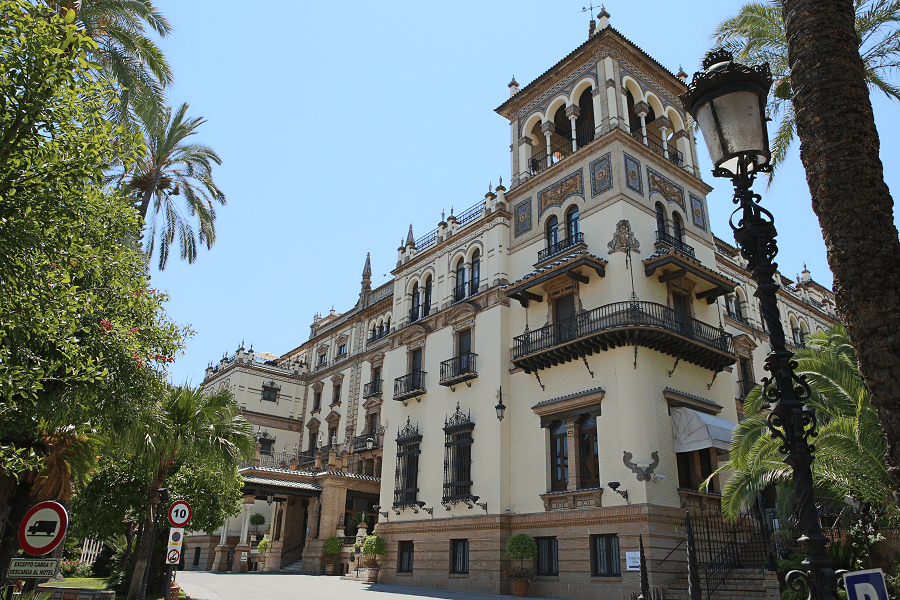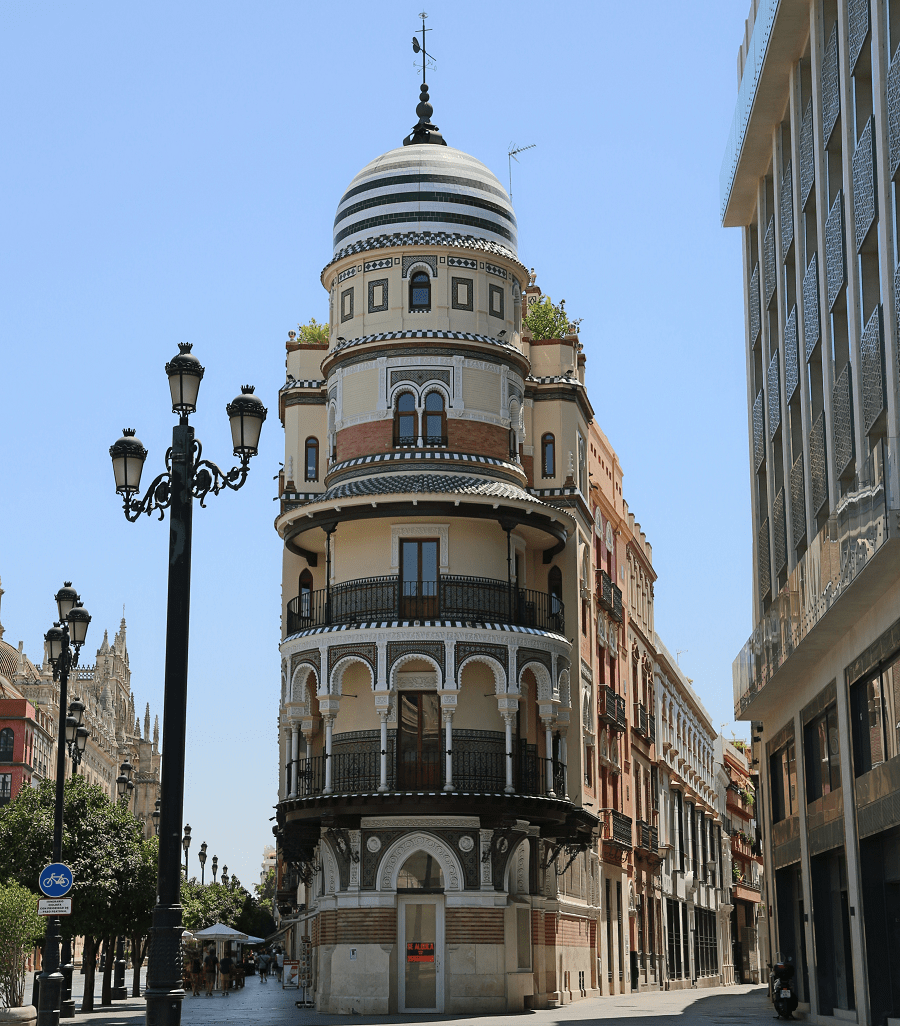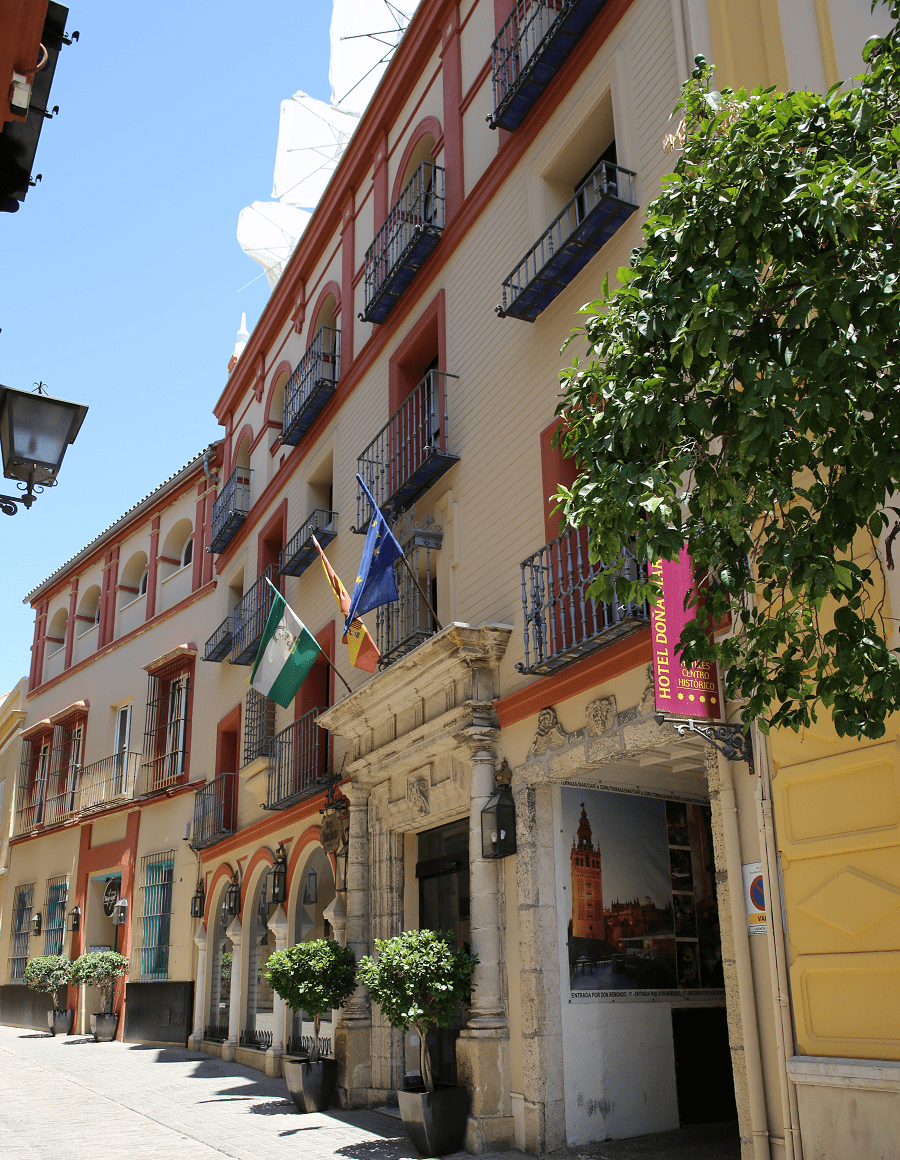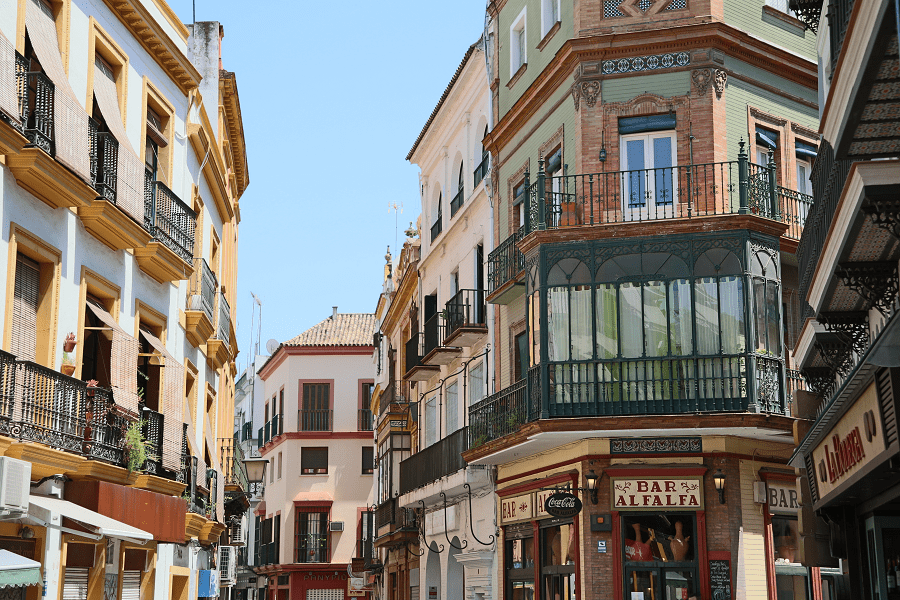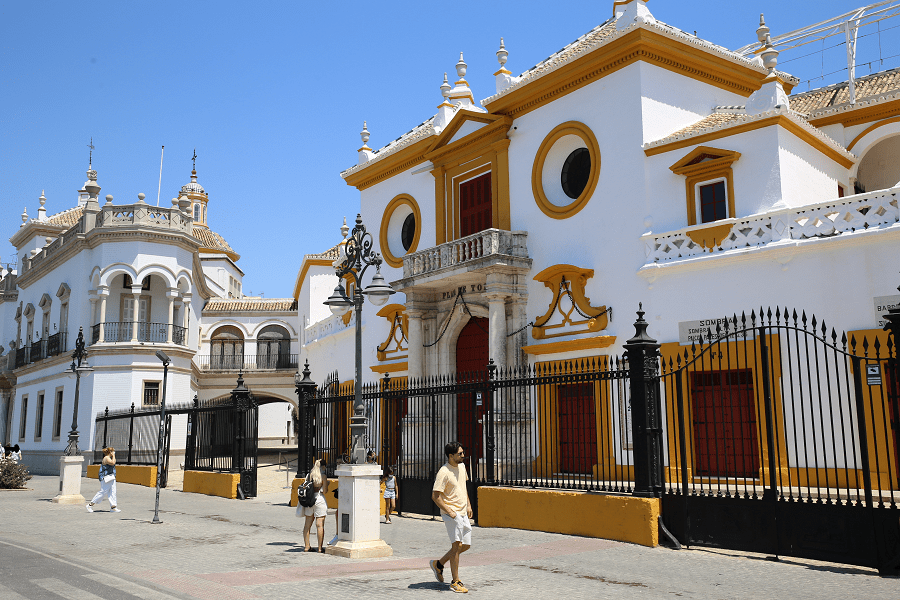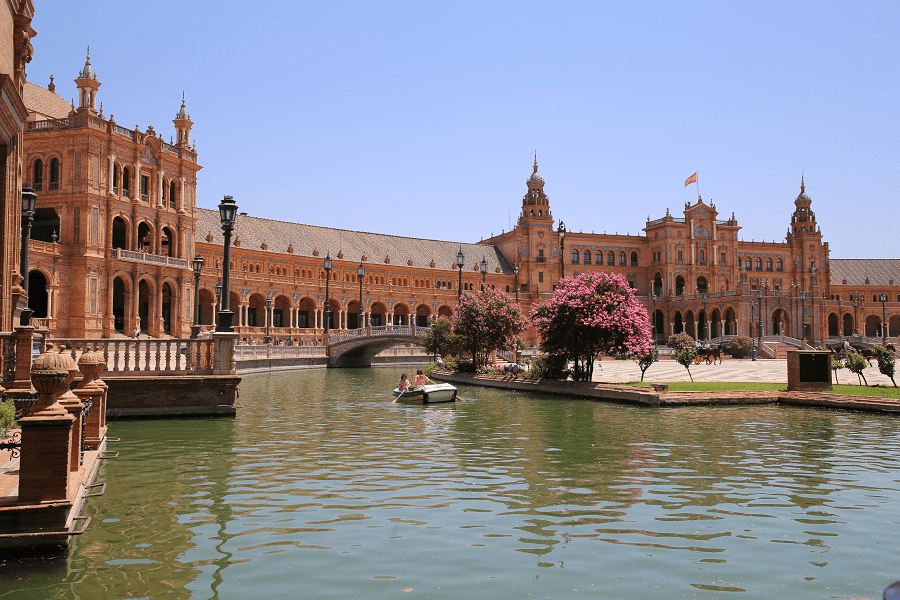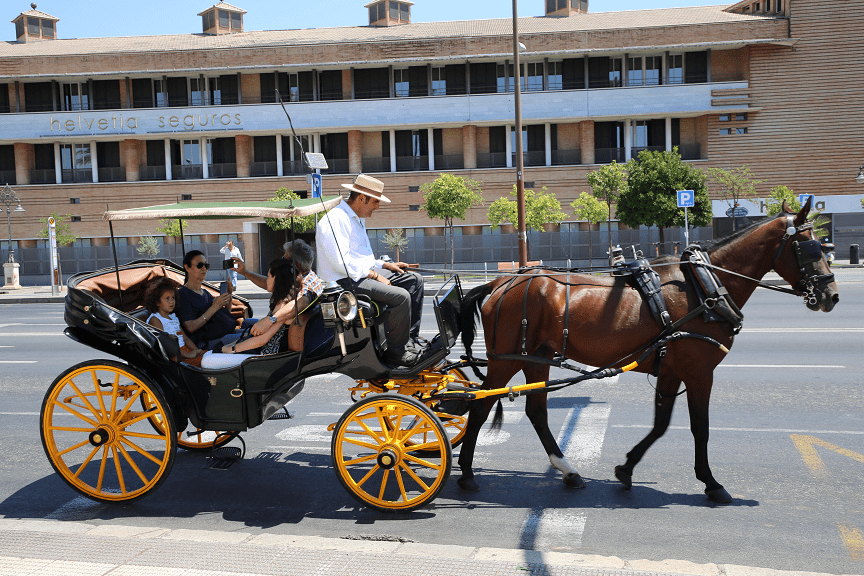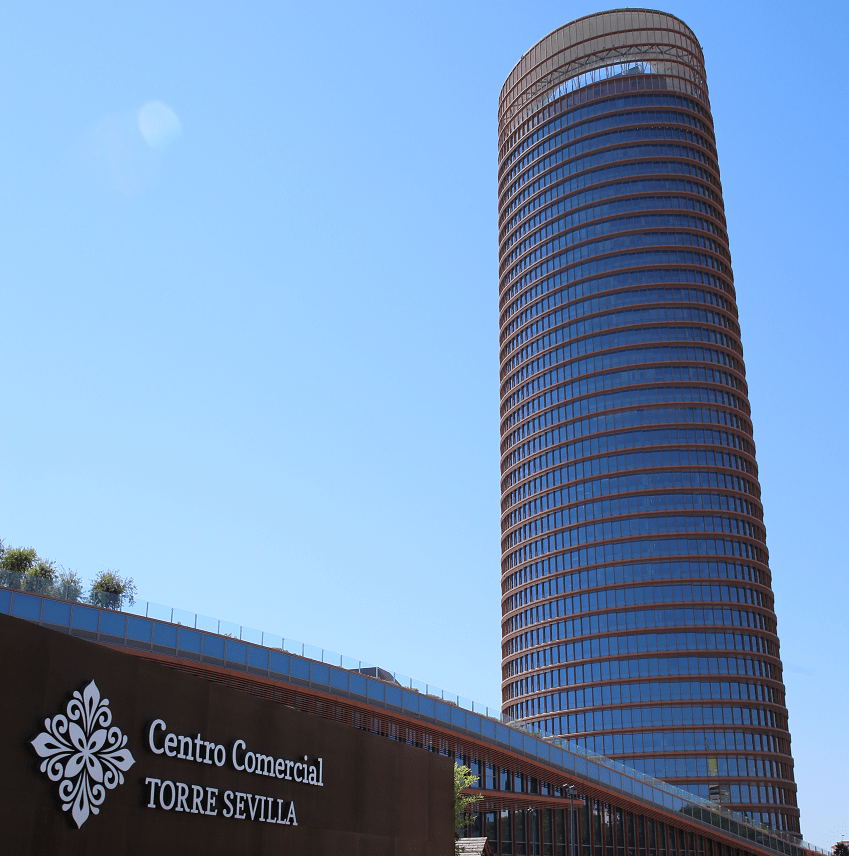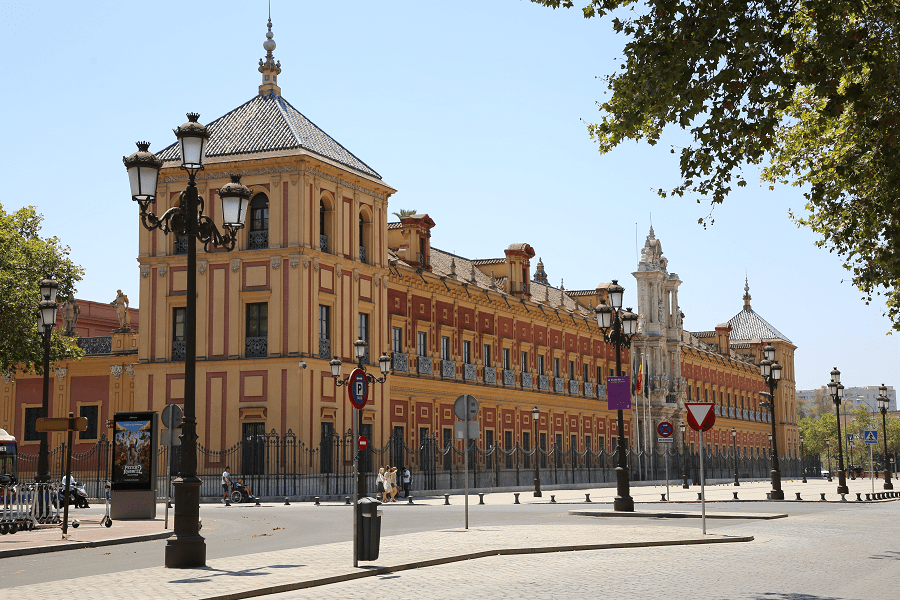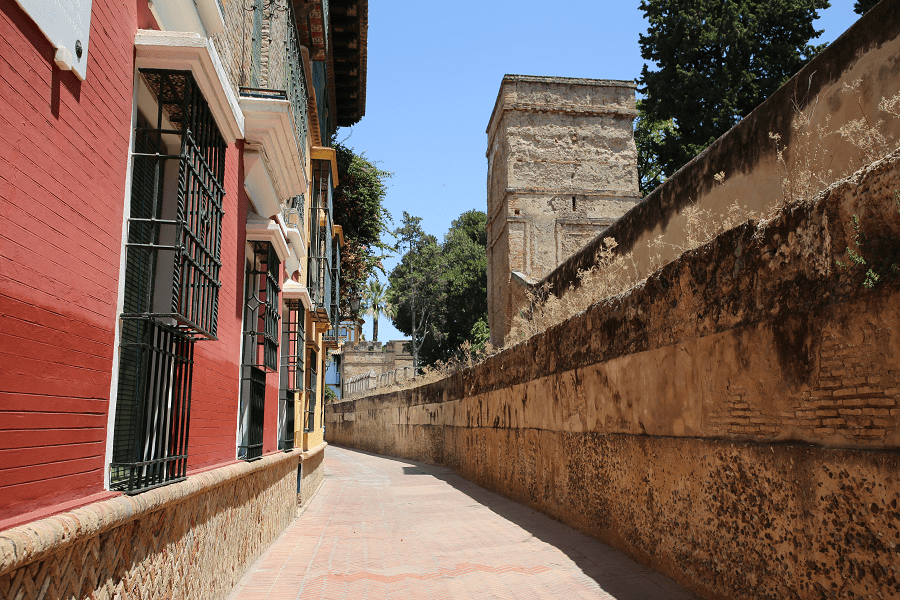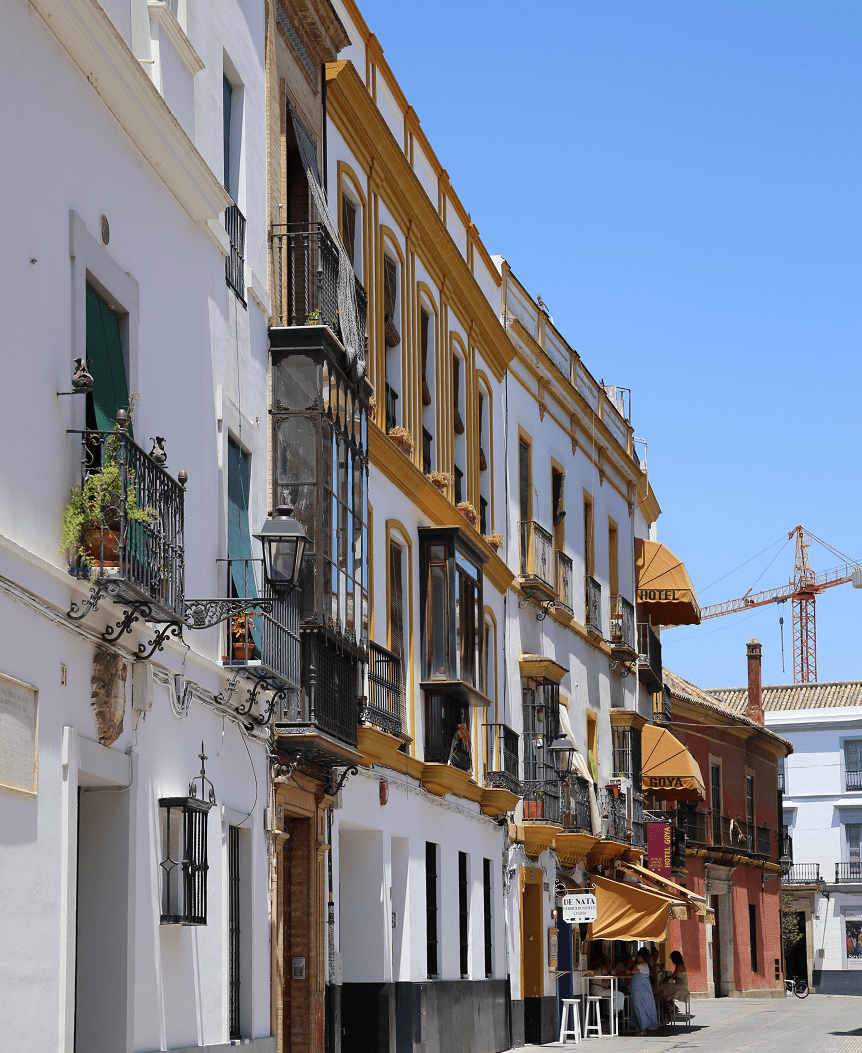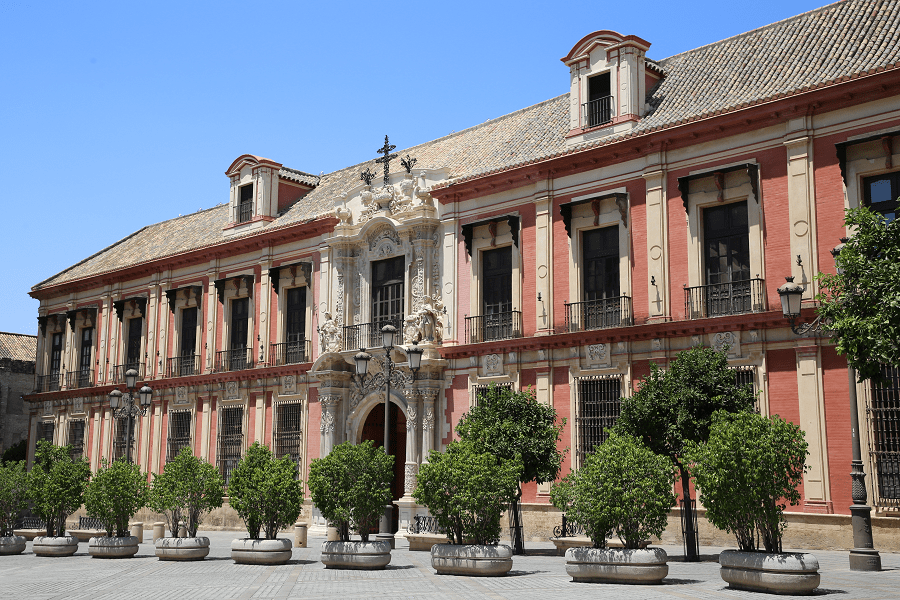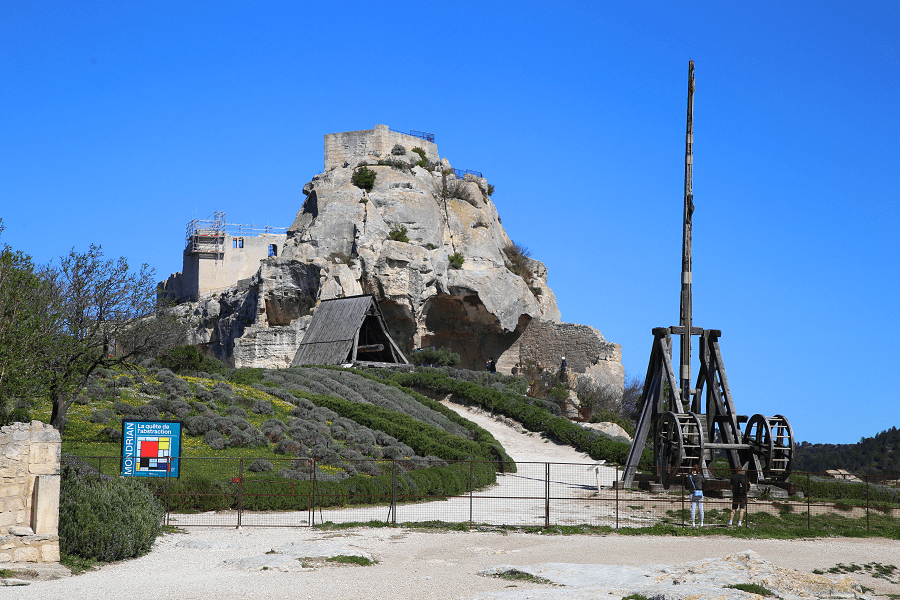Seville (Sp. Sevilla) is the capital and largest city of the autonomous community of Andalusia and the province of Seville, Spain.
It is the most populated city in Andalusia, the fourth in Spain after Madrid, Barcelona and Valencia, and the 32nd in the European Union.
Its old center, with 3.9 km², is the largest in Spain and the sixth largest in Europe, after Rome (14.6 km²), Naples (10.3 km²), Venice (7.6 km²), Florence (5.5 km²), and Genoa (4.1 km²). Seville is one of the cities with the most cataloged monuments in Europe. Its historical and monumental heritage and its various scenic and cultural spaces make it a host city for national and international tourism. It is the third most visited city in Spain, after Barcelona and Madrid. Among its most representative monuments are the cathedral (which includes the Giralda), the Alcázar, the Archivo de Indias and the Torre del Oro, the first three declared a World Heritage Site by Unesco in 1987.
It is the only inland city in Spain with a port and is located about 90 km from the Atlantic Ocean. The Guadalquivir River is navigable from its mouth in Sanlúcar de Barrameda to the city, although the Centenario bypass bridge limits the size of the ships seeking access to the city.
Main attractions
The Royal Alcázars of Seville, historically known as al-Qasr al-Muriq and commonly known as the Alcázar of Seville, is a royal palace, built for the Christian king Peter of Castile. Castilian Christians built it on the site of an Abbadid Muslim alcazar or residential fortress. The fortress was destroyed when the Castilians conquered Seville in 1248. The palace is a preeminent example of the Mudéjar style in the Iberian Peninsula, combining Romanesque, Gothic, and Renaissance structural elements. The royal family occupies the upper stories of the Alcázar when they visit Seville and the Patrimonio Nacional administers them. In 1987 UNESCO registered The Royal Alcázars of Seville as a World Heritage Site, along with the adjoining Seville Cathedral and the General Archive of the Indies.
The Cathedral of Saint Mary of the See, better known as Seville Cathedral, is a Roman Catholic cathedral, registered in 1987 by UNESCO as a World Heritage Site. It is the fourth-largest church in the world (its size remains a matter of debate) and the largest Gothic church.
After its completion in the early 16th century, Seville Cathedral supplanted Hagia Sophia as the largest cathedral in the world, a title the Byzantine church had held for a thousand years. The total area occupied by the building is 11,520 m2. The Gothic section alone has a length of 126 m, a width of 76 m, and its maximum height in the center of the transept is 42 m. The total height of the Giralda tower from the ground to the weathervane is 104.5 m.
Seville Cathedral was the site of the baptism of Infante Juan of Aragon in 1478, the only son of the Catholic Monarchs Ferdinand II of Aragon and Isabella I of Castile. Its royal chapel holds the remains of the city’s conqueror Ferdinand III of Castile, his son and heir Alfonso the Wise and their descendant king Peter the Just. The funerary monuments for cardinals Juan de Cervantes and Pedro González de Mendoza are among its chapels. Christopher Columbus and his son Diego are also buried in the cathedral.
The Archbishop’s Palace is on the northeastern side of the cathedral.
The Archivo General de Indias, “General Archive of the Indies”), housed in the ancient merchants’ exchange of Seville, the Casa Lonja de Mercaderes, is the repository of extremely valuable archival documents illustrating the history of the Spanish Empire in the Americas and the Philippines. Juan de Herrera designed the building, which is an unusually serene and Italianate example of Spanish Renaissance architecture. In 1987 UNESCO registered this structure and its contents as a World Heritage Site.
In 1785, by decree of Charles III, the archives of the Council of the Indies were to be housed here, to bring together under a single roof all the documentation about the overseas empire, which until that time had been dispersed among various archives in Simancas, Cadiz and Seville. Responsibility for the project was delegated to José de Gálvez y Gallardo, Secretary for the Indies, who depended on the historian Juan Bautista Muñoz for the plan’s execution.
Two basic motivations underlay the project; in addition to the lack of space in the Archivo General de Simancas, the central archive of the Spanish Crown, there was also the expectation, in the spirit of the Enlightenment, that Spanish historians would take up the history of Spain’s colonial empire. It was decided that, for the time being, documents evolved after 1760 would remain with their primary institutions.
The first cartloads of the documents arrived in October 1785. Some restructuring of the Casa Lonja to accommodate the materials was required, and a grand marble staircase was added in 1787, to designs of Lucas Cintara.
The walls of Seville were military fences that surrounded the old quarter of the city of Seville. Throughout history, Seville has had several walled enclosures, as it grew, the oldest references to the existence of walls appear in the Roman period, but there must have been some prior.
We know of the existence of a first enclosure of Roman origin of which no visible vestiges exist today, which would encompass the south-eastern quadrant of the current historic center (area from Puerta Jerez to San Martín, Encarnación, Puerta Osario, Puerta de la Carme and Alcazar). The only remains detected correspond to fortuitous finds in the subsoil of the city, these data, together with the observation of the current urban topography, have allowed us to trace a hypothetical route of the first wall of Hispalis.
The Torre del Oro was built as a watchtower and defensive barrier on the river. The river was used as a mode of defense. A chain was strung through the water from the base of the tower to prevent boats from traveling into the river port.
The Palacio de San Telmo, formerly the University of Sailors, and later the Seminary, is now the seat for the Andalusian Autonomous Government. It is one of the most emblematic buildings of baroque architecture, mainly to its world-renowned churrigueresque principal façade and the impressive chapel.
The Royal Tobacco Factory is housed on the original site of the first tobacco factory in Europe, a vast 18th-century building in Baroque style and the purported inspiration for the opera Carmen.
The Metropol Parasol, in La Encarnación square, is the world’s largest wooden structure. A monumental umbrella-like building designed by the German architect Jürgen Mayer, finished in 2011. This modern architecture structure houses the central market and an underground archaeological complex. The terrace roof is a city viewpoint.
The Plaza de España in the Parque de María Luisa (María Luisa Park) was built by the architect Aníbal González for the 1929 Exposición Ibero-Americana. It is an outstanding example of Regionalist Revival Architecture, a bizarre and loftily conceived mixture of diverse historic styles, such as Art Deco and lavishly ornamented with typical glazed tiles.
The Palacio de las Dueñas has belonged to the Casa de Alba since 1612. It was built between the 15th and 16th centuries, from Gothic-Mudejar to Renaissance styles and is one of the main buildings in the city, due to its historical, architectural, and cultural value. It was founded by the Pineda family, who had to sell it in 1484 to Catalina de Ribera for pressing money needs: they had to pay a ransom for Don Juan de Pineda, taken prisoner by the Moors.
La Antigua Audiencia, built between 1595 and 1597, and located in the Plaza de San Francisco. Throughout its history, this building has undergone numerous reforms, highlighting those carried out during the 16th and 19th centuries, as well as the work carried out in 1924 by the architect Aníbal González, who rebuilt the facade and the interior.
The Municipal Newspaper Library and Provincial Historical Archive of Seville, built between 1893 and 1913, occupies the building that originally served as the Palace of Justice of Seville. After its restoration, its façade shows a neoclassical portico, its interior contains two patios with galleries and a marble staircase. It has a total area of 4238 m².
The Seville City Council constitutes one of the most notable examples of Plateresque architecture. Construction began in the 15th century by Diego de Riaño, the master executed the southern sector of the Town Hall, the arch of communication with the Franciscan monastery and two floors covered with plateresque reliefs with representations of historical and mythical figures, heraldry and emblems alluding to the founders of the city, such as Hercules and Julius Caesar.
This headquarters was reformed in the 19th century by Demetrio de los Ríos and Balbino Marrón, who drew up a new main facade, facing the Plaza Nueva, of a neoclassical style. In turn, they reorganized the interior around two patios and a large staircase.
The Alfonso XIII Hotel is a historic building located between the Puerta de Jerez, the San Telmo Palace and the Tobacco Factory. Work of the architect José Espiau y Muñoz; It was built between 1916 and 1928, and officially inaugurated on April 28, 1929, with the celebration of a banquet presided over by King Alfonso XIII and Queen Victoria Eugenia. Architecturally, it is in the Neo-Mudejar style, a regional historicist version of Arab architecture, and presents rich ornamentation.
The Casa de Pilatos is a palace that combines Italian Renaissance and Spanish Mudejar styles. The construction of the palace began in 1483, at the initiative and desire of Pedro Enríquez de Quiñones (IV Adelantado Mayor of Andalusia) and his second wife Catalina de Ribera, founders of the Casa de Alcalá. It is considered a prototype of an Andalusian palace and several films have been shot there, including four Hollywood blockbusters: Lawrence of Arabia; 1492: The Conquest of Paradise and The Kingdom of Heaven, both by Ridley Scott and Knight and Day with Cameron Diaz and Tom Cruise.
The Hospital de las Cinco Llagas currently houses the seat of the Parliament of Andalusia. It was founded by Catalina de Ribera and its construction began in 1546 by order of Fadrique Enríquez de Ribera, 1st Marquis of Tarifa. It was designed by Martín de Gainza, who had directed the works until his death in 1556. The most characteristic element of the building is its church. The building functioned as a hospital until 1972. In 1986 the projects were drawn up for its conversion into the seat of the Parliament of Andalusia, inaugurating it on February 28 (Andalusia day), 1992.
The Santa Cruz neighborhood, an old medieval Jewish quarter located in the historic center of Seville, is one of the most emblematic and picturesque in the city. With narrow and winding streets, its Sevillian-style houses have stately patios and balconies with wrought-iron railings adorned with flowers. The neighborhood was founded when King Ferdinand III of Castile conquered the city and the second most important Jewish community in Spain, after Toledo, was concentrated in Seville. After the expulsion of the Jews in 1483, the neighborhood was abandoned and fell into decline, until at the beginning of the 20th century it was remodeled, directed by the municipal architect Juan Talavera y Heredia.
The Sevilla Tower is an office skyscraper, its construction started in March 2008 and was completed in 2015. The tower is 180.5 metres tall and has 40 floors. It is an office building, with the entrance to the tower located off Odiel street. The tower is the tallest building in Andalusia and in the city of Seville, and the seventh tallest in Spain. It provides a panoramic view on all Seville.
The tower is located in La Cartuja, the former zone of the Universal Exposition that took place in Seville between April and October 1992. It is located next to the river in an area being redeveloped since the early 2000s.
Museums
The Museum of Fine Arts of Seville – a collection of mainly Spanish visual arts from the medieval period to the early 20th century, including a choice selection of works by artists from the so-called Golden Age of Sevillian painting during the 17th century, such as Murillo, Zurbarán, Francisco de Herrera the younger, and Valdés Leal.
The building itself was built in 1594. The institution of the provincial museum of Seville was created in September 1835. Items were moved to the museum in the ensuing years. The building it is housed in was originally home to the convent of the Order of the Merced Calzada de la Asunción, founded by St. Peter Nolasco during the reign of Ferdinand III. Extensive remodeling in the early 17th century was led by the architect Juan de Oviedo y de la Bandera.
The Archeological Museum of Seville is a museum in Seville, southern Spain, housed in the Pabellón del Renacimiento, one of the pavilions designed by the architect Aníbal González. These pavilions at the Plaza de España were created for the Ibero-American Exposition of 1929.
The museum’s basement houses the El Carambolo treasure, discovered in Camas (3 km NW of Seville) in 1958. The treasure comprises 2950 grams of 24 carat gold and consists of golden bracelets, a golden chain with pendant, buckles, belt- and forehead plates. The hoard, initially associated to Tartessos, has been however interpreted since the 1990s rather as part of a Phoenician sanctuary; this later hypothesis was verified by new archaeological digs in the 2000s. The treasure includes a small figurine of Astarte, a Phoenician goddess.
Museum of Arts and Popular Customs of Seville occupies the Mudéjar Pavilion designed by Aníbal González and built in 1914. It served as an art pavilion, the Pabellón de Arte Antiguo, for the Ibero-American Exposition of 1929, when Aníbal González had the opportunity to design several additional permanent buildings for the plaza. The exterior is ceramic over brick, and has three doors with archivolts adorned with glazed tiles.
The building originally consisted of two stories over an aeration chamber. In the 1960s, the main floor, originally over 12 metres high, was divided in two, with an intermediate level added by architect Delgado Roig. In 1972, as part of the preparations for the current museum, the various stories of the building were connected by a grand spiral staircase designed by José Galnares Sagastizábal.
The Monastery of Santa María de las Cuevas, also known as the Monastery of the Cartuja (Charterhouse), is a religious building on the Isla de La Cartuja. In 1964, the monastery was declared a national monument, and now is owned by the government of Andalusia, which create a new institution called “Monumental Ensemble of the Monastery of Santa María de las Cuevas”. Restorations were made for the Seville Expo ’92, directed by Bartolomé Ruiz González, the first and only one director of the Monumental Ensemble from 1989 to 1994. In 1997, the older part of the monastery became the site of a museum of contemporary art, the Centro Andaluz de Arte Contemporáneo (CAAC).
Other museums:
- The Naval Museum, housed in the golden Torre del Oro, next to the River Guadalquivir
- The Carriages Museum, in the Los Remedios neighbourhood
- The Flamenco Art Museum
- The Bullfighting Museum, in the La Maestranza bullring
- The Palace of the Countess of Lebrija, a private collection that contains many of the mosaic floors discovered in the nearby Roman town of Italica
- The Centro Velázquez (Velázquez Centre) located at the Old Priests Hospital in the touristic Santa Cruz neighbourhood
- The Antiquarium in Metropol Parasol, an underground museum which is composed of the most important archaeological site of the ancient Roman stage of Seville and remains preserved
- The Castillo de San Jorge (Castle of St. George) is situated near the Triana market, next to the Isabel II bridge. It was the last seat for the Spanish Inquisition
- The Museum and Treasure of La Macarena, where the collection of the Macarena brotherhood is exhibited. This exhibition gives visitors an accurate impression of Seville’s Holy Week
- La Casa de la Ciencia (The House of Science), a science centre and museum opposite the María Luisa Park.
Cuisine and best restaurants
The tapas scene is one of the main cultural attractions of Seville: people go from one bar to another, enjoying small dishes called tapas (literally “lids” or “covers” in Spanish, referring to their probable origin as snacks served on small plates used to cover drinks). Local specialities include fried and grilled seafood (including squid, choco (cuttlefish), swordfish, marinated dogfish, and ortiguillas), grilled and stewed meat, spinach with chickpeas, Jamón ibérico, lamb kidneys in sherry sauce, snails, caldo de puchero, and gazpacho. A sandwich known as a serranito is the typical and popular version of fast food.
Typical desserts from Seville include pestiños, a honey-coated sweet fritter; torrijas, fried slices of bread with honey; roscos fritos, deep-fried sugar-coated ring doughnuts; magdalenas or fairy cakes; yemas de San Leandro,which provide the city’s convents with a source of revenue; and tortas de aceite, a thin sugar-coated cake made with olive oil. Polvorones and mantecados are traditional Christmas products, whereas pestiños and torrijas are typically consumed during the Holy Week.
There are 18 Michelin list restaurants in the city:
- Abantal, Alcalde José de la Bandera 7, 80 – 100 EUR • Creative Cuisine (One star)
- La Barra de Cañabota, Orfila 5, 20 – 60 EUR • Traditional Cuisine, Regional Cuisine
- Cañabota, Orfila 3, 45 – 90 EUR • Seafood
- Sobretablas, Colombia 7, 33 – 70 EUR • Contemporary Cuisine, Modern Cuisine
- El Rinconcillo, Gerona 40, 35 – 45 EUR • Traditional Cuisine
- Tribeca, Chaves Nogales 3, 75 – 140 EUR • Contemporary Cusuine, Traditional Cuisine
- La Azotea, Conde de Barajas 13, 25 – 35 EUR • Traditional Cuisine
- Ispal, Plaza de San Sebastián 1, 35 – 159 EUR • Modern Cuisine
- Az-Zait, Plaza de San Lorenzo 1, 25 – 48 EUR • Modern Cuisine
- Torres y García, Harinas 2, 15 – 40 EUR • Contemporary Cuisine
- El Asador de Aranda, Luis Montoto 150, 30 – 45 EUR • Castilian Cuisine
- Eslava, Eslava 5, 35 – 60 EUR • Traditional Cuisine
- El Gallinero de Sandra, Esperanza Elena Caro 2, 38 – 70 EUR • Contemporary Cuisine, Modern Cuisine
- Iki, Luis de Morales 2, 40 – 60 EUR • Japanese Cuisine
- El Disparate, Alameda de Hércules 11, 21 – 33 EUR • Contemporary Cuisine
- Puratasca, Numancia 5, Contemporary, Tapas
- Ovejas Negras, Hernando Colón 8, Fusion
- Tradevo Centro, Cuesta del Rosario 15, Contemporary cuisine
Shopping
The main shopping area is the square between Plazas Nueva, Magdalena, Encarnacion and San Francisco, with Calle Sierpes at its heart. For more touristy gear (flamenco aprons, T-shirts, bullfighting souvenirs) Barrio Santa Cruz has a wealth of places; for more individual shops, Barrio San Vincente and the Alameda; while for ceramics, Triana is where the beautiful azulejos (ceramic tiles) which adorn many Sevillano bars, hotels, churches and private houses are made.
Most shops are open from 10.00-14.00 and 17.00 to 20.00 Monday to Friday, and 10.00-14.00 only on Saturday, although some larger ones in the centre stay open all day and on Saturday afternoon. Nearly all accept major credit cards.
Department stores:
El Corte Ingles
Plaza de la Magdalena 1 (clothes, accessories, toiletries, food)
Plaza del Duque 7 and 13 (kitchenware, electrical goods, linen)
There is a flea market every Thursday on Calle Feria, and an art market on Paseo de la O by the river in Triana, on Saturdays and Sundays. An organic market takes place in the Alameda on the Saturday of the month.
Transport and how to get to?
Seville airport, known as Seville-San Pablo airport, is the only airport in the city after the closure of the Tablada Air Base. It is managed by AENA and is located ten kilometers northeast of the city.
The Seville-Santa Justa railway station is served by the AVE high-speed rail system, operated by the Spanish state-owned rail company Renfe.
The Seville metro (“Metro de Sevilla” in Spanish) is a light metro network serving the city of Seville and its metropolitan area. The system is totally independent of any other rail or street traffic. All stations were built with platform screen doors.
Distances to main cities of Andalucia and Madrid:
Huelva 1 hr 4 min (93.3 km) via A-49
Cádiz 1 hr 18 min (121 km) via AP-4
Málaga 2 hr 14 min (206 km) via A-92
Córdoba 1 hr 37 min (143 km) via A-4
Jaén 2 hr 41 min (253 km) via A-4
Granada 2 hr 38 min (248 km) via A-92
Almería 3 hr 59 min (413 km) via A-92
Madrid 5 hr 6 min (532 km) via A-66 and A-5
Main information
Area: 140 sq. km (municipality)
Coordinates: 37°23′00″N 5°59′00″W
Population: 691 395
Languages: Spanish
Currency: Euro
Visa: Schengen
Time: Central European UTC +1




